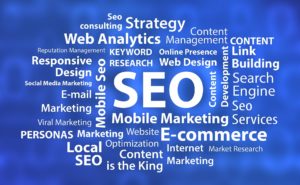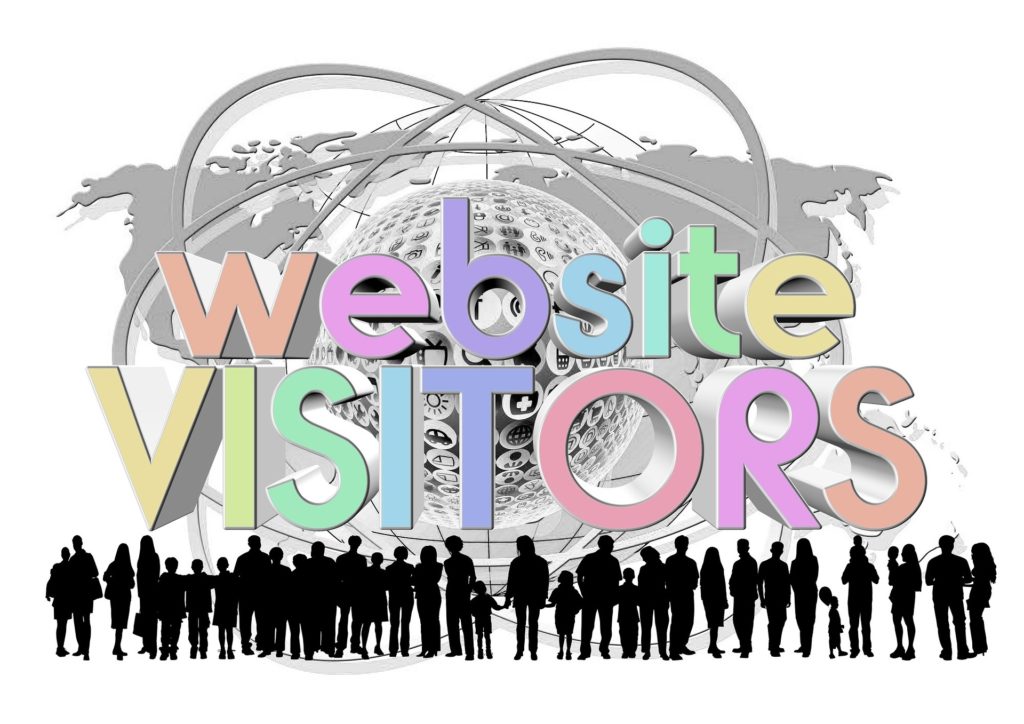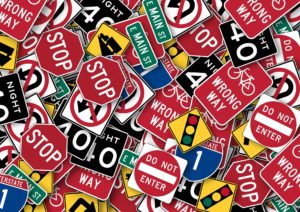It is the flagship of every Internet presence: the homepage. All in all, it must perform several functions and ensure that you are different from the competition. Designing the homepage is therefore one of the most important tasks when you create a web presence. But what should you pay attention to? What belongs on the homepage? In the following article we will answer all these questions.
Designing the homepage is enormously important. It is the front door, the business card, the advertising leaflet, the decoy and the floor plan of the web presence. And all this at the same time. At the same time, this one page, also called homepage, has to perform more functions than any other page of your website. Moreover, it is naturally accessed more often than the subpages of a web presence. This is also the reason why you should take care when designing your homepage. Quickly building a homepage often means being prone to errors. This refers not only to the written texts, but to the entire content and design. We have summarized the most important tasks of the homepage for you here. In addition, we show you which elements absolutely belong on the homepage and how content and design make your web signboard a success.
The central tasks of the homepage
The homepage provides answers to various questions at a glance: What is it about? As a searcher, can I find a solution to exactly my problem here? And: Where should I click next? In other words, it provides internet users with information and orientation and guides them to content that is relevant to the searcher. In addition, it should create trust in the company – and last but not least, of course, be found by search engines for certain search queries. Whoever creates a homepage must therefore:
- reveal who the site is from
- show what you can do/find here
- give an overview
- provide access to the most important functions (search, contact, login…)
- convey the image of the company
- arouse curiosity and
- point out news
An abundance of tasks. And these have to be reconciled on a page that is no larger than the other subpages (web pages). For this to succeed and for the homepage to still look attractive, you need to plan it well and ultimately prioritize content.
Trench warfare over the homepage
Not all website operators or web designers agree on what to put on the homepage. Heated discussions are not uncommon. Because everyone knows that it is the most important page and wants to place their own interests (products, department, hobbyhorse or similar) there as present as possible. However, a good guiding principle for the design of home pages is: Find out what users of the site are most interested in! Ultimately, that’s what they’re looking for in web content. Carefully bring this into the discussion. Don’t make enemies and justify your suggestions objectively. Don’t say, “I don’t think xy interests your customers,” but rather something like, “Our tests have found that users of a site always search for xy first.” This is not to say that you should invent something, but that you should justify your suggestions not with opinions, but with experiences from yourself or from others (studies, books, etc.).

Homepage content
Homepages consist of several elements. In addition to text and images, a navigation menu is usually part of the homepage. Sometimes a language selection can be relevant. This is especially true for internationally operating companies. Here we have an overview of the standard elements, as they can be found on almost every homepage nowadays:
- Texts
- Images
- Navigation menu with search function, login or registration for users
- Metanavigation (imprint, general terms and conditions, privacy policy, contact, FAQ area, links to social media channels like Facebook, newsletter registration if applicable)
- Current information (e.g. news, press releases, blog)
- If applicable, call-to-action elements such as newsletter sign-up (if not in the meta navigation).
The individual elements can be placed in different ways. However, you should not deviate too much from the standard so as not to confuse users. For example, the navigation menu usually belongs in the head of the homepage. Texts and images are best placed in the content area, which is the main part of the site. Current information such as news, press releases or selected articles from your own blog can also be part of the content area, but do not necessarily have to be. They can also be linked via the navigation bar in the head. This is particularly advisable if this information is not maintained on a daily basis on the website. Sometimes it is advisable to link to a blog in the navigation bar, at least for regular but not daily updates, and to prominently display individual posts from the blog in the content area. In the same way, the newsletter subscription as a call-to-action element does not necessarily have to appear in the content area, but can also be part of the metanavigation in the footer of the site.
Topicality on the homepage
Especially with regard to discussion material for content placement, it can be a good compromise to bring changing topics in the content area of the homepage. For example, one department can present itself here every week. Variety on the homepage generally looks good, even if the content of the site itself does not change. This lets users see that the site is actually being maintained. Also, it’s more effective to present one topic in a little more space than several small ones next to each other. Too many things at once will overwhelm the visitor. If you make everything seem important, everything will get lost. It goes without saying that topicality is especially important for the homepage. Outdated information is taboo. But especially here you are often greeted by “news” that are several months old. If you do not know for sure that the homepage is regularly and conscientiously maintained, do without content that is not timeless and, if necessary (for example, in the case of press releases), pack it via the navigation bar in the head onto a subpage, such as the blog, as we described earlier.
Designing the homepage – presenting content briefly and concisely.
An important task of the homepage is that it must answer the question, “What is this?” It’s not uncommon for this to be overlooked. There are sites that don’t need it (anymore). Someone who goes to Amazon knows that they are in a marketplace for different goods that they can buy there. But if you go to BMW, you know that the abbreviation stands for Bayerische Motoren-Werke and expensive cars. However, he does not know what the site brings. This means that even a brand, no matter how well-known, should make it clear on the homepage what it offers the user. Often, this is done by describing in a few sentences what the site or company offers in the content area in the middle of the homepage. You should be careful if this is formulated by the marketing department of your client. The so-called mission statement is out of place here. (“XY is the leader in the entertainment market. Through innovative products, it brings… to people around the world.”).
Instead, you should describe in a few words why the visitor is exactly right for this site, and what benefits it offers him. For example, a retailer is looking for payment solutions on the web. He arrives at your homepage. On it, you write something like “Payment solutions for retailers – individual and modern”. The (potential) customer who comes to your homepage via Google search already knows from this sentence that he or she can find payment options for their own business on your site. Your content should follow the guiding principle of scannable content: Users must be able to grasp it quickly. Texts should therefore be as short and concise, but also as informative as possible. The best way to do this is to arouse the curiosity of potential customers. But how do you walk the tightrope between information content and easy-to-grasp content? The trick is to focus on your main users.

Focus on the main users and pay attention to SEO
So don’t try to put everything that might interest a potential visitor on the homepage. This will inevitably make the page crowded and confusing. Focus on your most important users as well as their most frequent concerns and run first answers to them. Everything else you make accessible via the navigation. It is important that the paths are always clear, that users always know how to get to the information/functions they are looking for. If this is guaranteed, the number of necessary clicks plays a subordinate role. When creating the website texts, it is imperative to analyze and include the keywords that are relevant for your main users. This is the only way your website can be found by them.
Some start pages do without the standard navigation. However, this is only a good idea if users learn elsewhere what to expect on the site and how it is structured. Because that’s what the default navigation usually tells them. If you do not use the standard navigation on the homepage of your website, it is essential that you provide orientation in a different way. On the homepage, the standard navigation may also look slightly different than on the following pages. However, it must be immediately recognizable. The labels of the buttons should not change, neither their color nor their shape. However, you can modify the size and positioning if you need more space for announcements, for example, or if you want to display the menu items slightly larger than on the other pages. External links have no place on the homepage. It should attract visitors to the site, not to another one. Stern magazine doesn’t write “Read the stirring report on the Amazon in the new GEO!” on its cover, even if GEO belongs to the same publishing house.
Attracting visitors to the site
Announcements of topics on the homepage are also called teasers. They are meant to get the visitor to go deeper into the site. Creating good teasers is an art. It is comparable to finding good headlines. They should arouse curiosity, but they must fit the style of the site. If the teasers are too clumsy, they will not appeal to your target audience. A reader of the Frankfurter Allgemeine Zeitung may also read the headline of the Bild newspaper in passing, but this will not make him or her read or even buy the product. For the teasers, work with image elements as well, not only with text. If the homepage already looks like a desert of lead, it is difficult to convince users that worthwhile content is waiting for them on this site.

What to avoid on the homepage
As with everything, there are do’s & don’ts when it comes to website design for businesses. We have just explained the do’s to you. For the don’t’s, the welcome, counters, pop-ups, external links and excessive self-promotion are at the top. And advertising as well as linguistic subtleties also harbor conflict material on the website homepage.
No welcome greeting
Refrain from phrases like “Welcome to our homepage!”. This takes up unnecessary space and comes across as unprofessional. If you want a personal touch, rather describe what you do for the user and how you respond to his individual wishes. And be as specific as possible. Not “We fulfill all your wishes around xy.” but rather “Together with you, we will work out the most cost-effective solution for xy. Our experts will take measurements on site and suggest yz to you.” However, if the homepage is personalized and the content is tailored to the registered and recognized user, you should already welcome him or her. Don’t stop there, though, but tell him or her what’s new for.
No external links, pop-ups or counters
Links are also allowed on the homepage. However, this usually only applies to internal links. And even these should only be used at strategic points. The main navigation should always be via the navigation bar or meta navigation. You should refrain from using external links on the start page – the special feature “advertising” will be explained separately. Pop-ups are also one of the “enemies” of the home page. Avoid pop-ups. The only exception is consent to cookie policies, which is required for privacy reasons. Otherwise, you should rather refrain from using pop-ups for marketing purposes. A less disruptive solution is to integrate call-to-action elements into the content area or meta navigation (newsletter sign-up). Similar to pop-ups, the same applies to counters. They are outdated and definitely don’t belong on any website anymore – regardless of whether it’s the start page or a subpage.
Dealing with advertising, technical terms and excessive self-promotion
The topic of advertising on the homepage is a source of conflict. On the one hand, advertising banners bring in the most money where most users come. On the other hand, the space on the start page is too precious for this: If the start page does not succeed in luring a visitor inside the site, he or she has seen the advertising on the start page. On the other hand, if the homepage is good, the user will click on at least one link. The probability that he or she will look at other pages is high. Once you have convinced a visitor with the homepage, he or she will almost always stay on the site for some time. This means that they will see several pages with advertising banners. Therefore, if possible, you should avoid advertising banners on the homepage or at least subordinate them to the rest of the design.
Many users find animated banners particularly annoying. If you cannot do without them, it may be better to place them on the homepage. After all, if users find their way around quickly, they will only linger on them for a short time. Deeper in the site, on the other hand, animated banners can be very annoying when people want to read longer texts. Do not design important content like banners. The risk that they will be mistaken for advertising and overlooked is great. Technical terms and excessive self-promotion also harbor potential for conflict in companies. Marketing managers naturally want to put products and companies directly in the foreground on the start page. However, this is often accompanied by too much text. That’s why it’s time to shorten! When presenting yourself, limit yourself to the essentials and always keep in touch with your customers by focusing on their benefits and advantages. Restraint also applies to technical terms. Customers should quickly grasp and understand the contents of the homepage.

The “screen fold”: placing important information at the top
No translation has yet become established for the American “fold.” The “fold” or “screen crease” describes the place on a webpage that separates the area visible on the screen (above-the-fold) from the area not visible (above-the-fold) without scrolling. Its position depends, of course, on the user’s monitor. The most important information should be on the homepage above the fold of the screen. After all, this is where users are most likely to leave the site if they don’t find what they’re looking for right away – without scrolling.
Design of the homepage: Form follows function and responsive layout
The design of the homepage determines the first impression. If the user “doesn’t like” a site at first sight, it will be hard to keep him or her on the site longer. Poor information or navigation architecture is not noticeable until the user tries to use the site. The design, however, has an immediate effect. It is not only decoration, but it supports the communication. The guiding principle “form follows function” applies: the design should support the functions of the website. But it also conveys the mood of the site and the style of the company. It clarifies the structure. It sets priorities. Accordingly, you should take great care here. Create a distinctive image of your website. Don’t model yourself too closely on the competition. Images of things you sell, of your employees, customers or rooms are always better than interchangeable photos from photo agencies. Last but not least, make sure that the web design is responsive and can be used equally well on all devices. Likewise, users expect a low loading time of 1-2 seconds maximum.
Homepage design: Tips in a Nutshell
Designing a website homepage means considering many small aspects, as you have learned in this post. Therefore, we have once again summarized the most important points for you here:
- The homepage includes: Short and concise texts, images, a navigation menu, a meta navigation.
- Keep your homepage up-to-date – especially if you embed a news section.
- Concentrate on your main users when it comes to content.
- Keep SEO aspects in mind when copywriting and use keywords that are relevant to your main target audience.
- Make your navigation menu intuitive so that visitors can quickly find their way around.
- Attract users to additional subpages by anteasing selected content on the homepage. For example, the topics can vary depending on marketing activities.
- Refrain from a welcome message, external links, pop-ups and counters.
- Avoid excessive self-promotion and focus on the benefits for users.
- Place advertising on the homepage only when necessary or subordinate it to the web design.
- Place important information at the top of the content area.
- Web design works on the principle of “form follows function”: the design should graphically support the content.
- A responsive design is a must-have to ensure a positive customer experience on all devices.
- Make sure that the loading time of the homepage is short.

No Comment